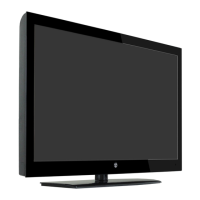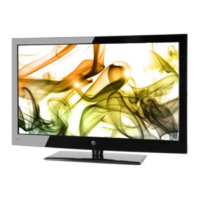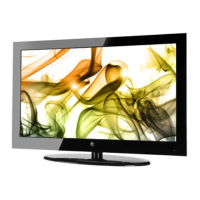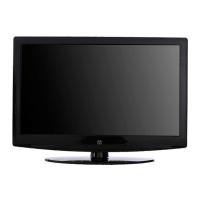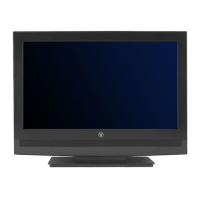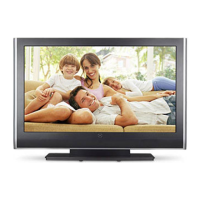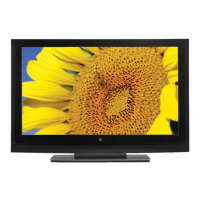Do you have a question about the Westinghouse CW50T9XW and is the answer not in the manual?
Covers risks of electric shock, fire, explosion, and radiation exposure.
Guidance on ventilation, placement, AC cord handling, and long-term storage.
Details on rating plate location and FCC statements.
Covers manual reading, cleaning, ventilation, heat, attachments, and cart safety.
Focuses on plug safety, cord care, grounding, and professional servicing.
Lists all items included with the product.
Step-by-step guide for inserting batteries into the remote.
Detailed explanation of each button on the remote control.
Identifies and explains components on the front of the TV.
Identifies and explains connectors and ports on the back of the TV.
Identifies and explains controls on the side of the TV.
Guides on connecting aerial, cable, or satellite sources.
Instructions for connecting VCRs, camcorders, or game systems.
Details on connecting devices via composite video and audio.
How to connect HD sources using YPbPr component inputs.
How to connect HD sources using HDMI input.
Instructions for connecting a computer via VGA and audio.
How to connect headphones and adjust volume.
Safety precautions for connecting the power cord.
Guides on connecting the TV to a home theater system via Coax.
Steps for attaching and detaching the TV's base stand.
Guidelines for wall-mounting the TV using a VESA kit.
Advice on TV placement and environmental considerations.
Initial setup for language, time zone, and power mode.
Setup steps for connecting cable/satellite boxes and selecting source.
Guide for performing an automatic channel scan.
How to select different input sources for the TV.
Explains how to navigate the main menu structure.
Options for managing channels, favorites, and signal type.
Settings for program rating control and keypad lock.
Options for closed caption, language, and clock settings.
Settings for screen background, power options, and resets.
Adjusting picture quality aspects like brightness, contrast, and color.
Selecting picture modes like Standard, Movie, User, or Dynamic.
Detailed adjustments for brightness, contrast, color, tint, and sharpness.
Adjusting PC input settings like Auto Adjust, Horizontal/Vertical Position, Clock, and Phase.
Configuring advanced picture options like Dynamic Contrast and Noise Reduction.
Adjusting sound settings like Surround Mode, AVL, and equalizer.
Customizing sound modes and adjusting Bass, Treble, and Balance.
Fine-tuning audio frequencies using the equalizer.
Viewing and managing available channels and creating favorite lists.
Configuring channel skipping, favorites, and renaming labels.
Selecting the antenna source as Air or Cable.
Performing an automatic scan for TV channels.
Customizing channel viewing preferences and naming.
Locking parental controls, changing passwords, and keypad lock.
Setting movie rating controls based on MPAA rules for the US.
Explains age-based and content-based TV rating systems.
Details on English and French rating systems for Canada.
Procedure for changing or recovering the parental control password.
Configuring closed captions, menu language, and clock settings.
Customizing the appearance of digital closed captions.
Setting time zone, auto clock, and daylight saving time.
Configuring Blue Back, power-off timers, and system reset.
Lists resolutions, scanning frequencies, and formats for PC input.
Lists resolutions, scanning frequencies, and formats for Component/HDMI input.
Details on LCD panel type, size, resolution, brightness, contrast, and system info.
Information on various input/output ports and audio capabilities.
Specifies power consumption and input voltage.
Solutions for common issues like bad picture, no sound, or black and white display.
Troubleshooting for colored patches, unresponsive keys, hot panels, and dots.
Addresses screen stripes, hot top monitor, and inability to select channels.
| Brand | Westinghouse |
|---|---|
| Model | CW50T9XW |
| Category | LCD TV |
| Language | English |
